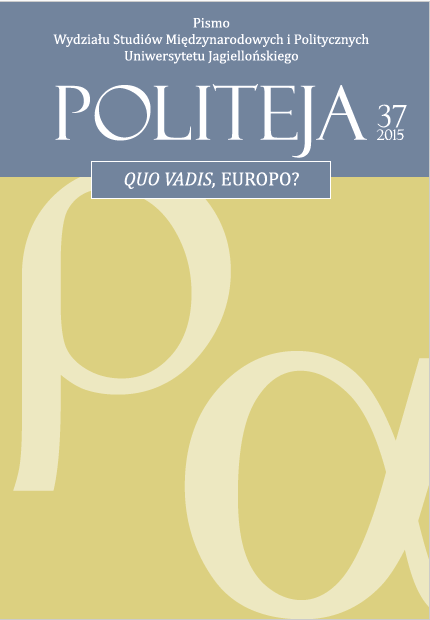Dyplomacja kulturalna jako narzędzie miękkiej siły Unii Europejskiej
Cultural Diplomacy as an Instrument of the European Union Soft Power
Author(s): Marta Ryniejska-KiełdanowiczSubject(s): Politics / Political Sciences
Published by: KSIĘGARNIA AKADEMICKA Sp. z o.o.
Keywords: culture; public diplomacy; cultural diplomacy; soft power
Summary/Abstract: The aim of this article is to answer the question of how European Union uses tools and methods of cultural diplomacy, the extent to which these can help achieve international aims and what are their functions. While the importance of culture has been on the rise in the realm of foreign affairs, its role in this field remains one of the most under‑studied aspects of policy. In this text I point out what is the cultural diplomacy, and which programs are proposed by EU to interest the world, not only in the European Union but also foreign audience. M.C. Cummings defines cultural diplomacy as the exchange of ideas, information, values, systems, traditions, beliefs, and other aspects of culture, with the intention of fostering mutual understanding. European Union uses culture to support their soft power potential, to generate goodwill, to frame international agenda in particular ways, to erect and re‑enact boundaries and/or to create societal linkages across them. According to J. Nye: cultural diplomacy is the best example of soft power, i.e. the possibility of communicating, via the conduit of culture, of values and ideas. Furthermore it is the ability to achieve to what is desired rather than attractiveness or coercion. It is the result of the attractiveness of a given culture, political ideals and the substance of the policy of a given country. Thus, Europe’s cultural diplomacy is an important element of EU relations with the rest of the world and thus plays a part in shaping the EU’s reputation and the exercise of union interests.
Journal: Politeja - Pismo Wydziału Studiów Międzynarodowych i Politycznych Uniwersytetu Jagiellońskiego
- Issue Year: XII/2015
- Issue No: 37
- Page Range: 143-160
- Page Count: 18
- Language: Polish

